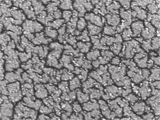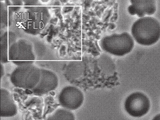Better keep yourself clean and bright; you are the window through which you must see the world.
—GEORGE BERNARD SHAW
The rising tide of obesity in this country (and around the world) directly correlates with the “low-fat” era of nutrition advice. Paradoxically, trying to avoid fat seems to be making us fatter than ever. The most current antidotes—low-carb, high-protein regimens—may provide temporary results if you are concerned only about the numbers on your scale. They often include more fat in the diet—the toxic, artery-clogging kind. Even without that, the excessive protein dangerously stresses your intestines, kidneys, and liver, and weakens your bones. You might possibly get thinner, temporarily, but you probably won’t become any healthier.
Nevertheless, Americans are spending more than $40 billion a year on various diet programs and products, such as Atkins, South Beach, Sugar Busters, Weight Watchers, The Zone, Eat Right for Your (Blood) Type, and so on—and $15 billion a year for low-carb products. Each program offers its own spin on the cause of and solution to overweight and obesity, with its own list of foods to eat and avoid, in what proportions. What all these have in common, with each other and with conventional low-fat/food-pyramid wisdom or conservative Weight Watchers approaches, is that they will make your body moderately to highly acidic. Each and every one recommends foods that can create a pH imbalance in your body, polluting your blood. An imbalance can make you sick—and fat. And keep you fat. In the long run, you will probably regain any weight you did manage to lose, and, in the case of high-protein diets, if you continue it for any length of time (generally over one year), serious sickness or disease may result.
That’s right: Following most fad diet plans will, eventually, help you gain unwanted weight, as your body desperately protects itself from acidity by piling on the fat. The only true and lasting solution to overweight, I believe, is providing your body with healthy, alkaline blood—something you won’t get with anything on the current bestseller lists.
Take for example the latest craze, the South Beach Diet, which recommends a high level of quality, lean protein and moderate levels of fat and carbohydrates. As I see it, the problem with that protein, besides just the vast quantity of it, is that the chicken, turkey, and eggs the author emphasizes are all highly acidic and proton-rich. Reading through the South Beach recipe for Coconut Chicken, for example, I noted a number of moderately alkaline ingredients—the “veggies,” which consist of nothing more than onion and scallion; healthy coconut milk, olive oil, and macadamia nuts; and spices measured by the teaspoon, or less. But all that is quite literally outweighed by the chicken and other acidic ingredients, including a sugar substitute. Furthermore, everything is cooked so long that the electron-rich ingredients are compromised, and the otherwise healthful oil may become toxic. Your blood will be thoroughly acidic within minutes after dining on this dish. In my review of Dr. Agatston’s menu plans and recipes, I did not find a single recommendation that did not have major or minor ingredients that were acidic. Even if you were to lose weight on this plan, it wouldn’t necessarily be a healthy weight loss.
A nutritional analysis of the Atkins diet by the Physicians Committee for Responsible Medicine revealed problems with following that program. Their review showed that the menu plans in all three phases of the Atkins program are consistently high in saturated fat and cholesterol and very low in fiber, and frequently deficient in the seven key vitamins and minerals they measured. The menu plans include, as promised, plenty of protein (between one-quarter and one-third of calories) and very little in the way of carbohydrates (between 3 and 22 percent of calories). You’d also get 45 to 64 percent of your calories from fat, roughly a quarter to a third of that from saturated fats, which raise the risk of heart disease—between 38 and 45 grams each and every day. Fiber tops out at 18 grams in a day, though only in the maintenance phase; before that you’ll get an average of a mere 2 to 7 grams a day. Compare that to the 20 to 35 grams generally recommended to lower risk of chronic diseases and control weight. The Atkins menus were also deficient in all of the key nutrients measured: calcium, iron, vitamin C, vitamin A, folate, vitamin B12, and thiamine. (Even the Atkins program itself suggests taking calcium and magnesium supplements.) And that’s if you’re satisfied to go by the extremely low standards of daily values, which are calculated to prevent diseases of deficiency, not meant to measure how much is required for general good health. Last, but definitely not least, Atkins, like all high-protein diets, is highly acidic, consisting almost entirely of proton-rich foods.
HIGH PROTEIN, HIGH RISK
The Atkins diet is, of course, the longtime leader of a pack of high-protein, low-carb diets, too numerous to list comprehensively. Whatever the specifics of their individual take on the subject, these plans generally have too much protein and unhealthy fat, not enough fiber, and insufficient levels of key vitamins and minerals. And they’ll all make your body acidic—and thus, sick, tired, and primed to gain weight.
Research published in the elite medical journals, including the Journal of the American Medical Association (JAMA) and the New England Journal of Medicine (NEJM), concludes that following such a high-protein diet for any significant length of time can put you at an increased risk for heart disease and heart attack, kidney disease and kidney stones, diabetes and diabetic complications, certain types of cancer (particularly colon cancer), gout, and osteoporosis. Many people restrict their physical activity while on a high-protein/low-carb plan, and the additional risks of lack of exercise are well known. If you can’t get worked up about what can happen to you over the long haul, perhaps the potential immediate risks will convince you: mood disturbances, constipation, bad breath—and fatal cardiac arrhythmias. (For a free copy of Shelley Young’s article “So… What Can I Eat,” go to www.pHMiracleLiving.com/bookbonus.)
In addition to the health risks agreed upon by mainstream medical science, my own blood research shows that high-protein diets can interfere with healthy red blood cell production by congesting the bowel and clogging up the villus in the small intestine. With normal red blood cell production stopped, body cells are called upon to be transformed into blood cells in order to keep the required density of blood cells. To my way of thinking, the reason some people lose weight on these diets is that their bodies are literally wasting away, seriously compromising their health in the interest of weight loss that is bound to be temporary anyway.
IF I DON’T DIE, AT LEAST I’LL BE SKINNY
If you’ve gotten so frustrated with controlling your weight that you are even willing to risk your life and health to shed some pounds, even temporarily, I’ve got some important news for you: Studies at Duke and the University of Pennsylvania, among others, show that six months on a high-protein, low-carb diet can result in a reduction of about 20 pounds—or, just about exactly the same as the low-fat, moderate-protein diets that are generally regarded as healthy and safe. Research published in JAMA that reviewed more than one hundred studies on high-protein/low-carb diets and low-fat/moderate-protein diets concluded that the amount of weight lost correlated with length of time spent on a given diet, and with the number of calories ingested—but not with reducing carbohydrate intake. We shouldn’t be surprised: Vegetarians, who generally eat diets rich in carbohydrates, have significantly lower body weights, overall, than people who eat meat. In fact, when switching to a vegetarian diet, most people lose about 10 percent of their body weight.
I’m not, however, recommending a low-fat diet like the government food pyramid, Dean Ornish’s program, Weight Watchers, the American Heart Association and American Diabetes Association plans, and the like. You’ll get the details on the importance of including plenty of healthy fats in your diet in chapter 6. Beyond that, the low-fat diets in studies like the ones I’m talking about here are still full of acidic, proton-rich foods. There’s nothing wrong with carbohydrates per se—they are a part of the pH Miracle Living plan—but there are specific types of carbohydrates that will make you acidic. Low-fat diets are, by necessity, high in carbohydrates, but if you’re getting acidic carbs (simple carbs your body handles just the same as any sugar), you’ll be providing sustenance not only for you but also for the bacteria, yeasts, and molds running rampant in your body. Overwhelming your body with, essentially, sugar this way can lead to sugar intolerance, prediabetes and, eventually, diabetes. It can also stress your adrenals, making you, among other things, tired. And, to protect yourself from acid damage, you’ll get fat.
I don’t know about you, but for me, any eating plan should not only promote weight loss but also health. There are plenty of people apparently willing to live with the health consequences of any plan, as long as it results in short-term weight loss. An eating plan, even a diet, should be nutritious, providing everything the body needs for radiant good health and nothing that will detract from that. Most of what’s been available up to now has failed that basic (alkaline!) test. And so ultimately they fail when it comes to permanent weight loss as well. The focus at various times on calories, high-protein, low-fat, low-cholesterol, or a series of other red herrings means we’ve overlooked the one thing that matters most when it comes to living at your ideal healthy weight: the acidity or alkalinity of what you eat and drink.
THIS IS YOUR BLOOD ON PROTEIN… ANY QUESTIONS?
Every last criticism of the high-protein and high-carb diets shows up in the blood. In fact, those ways of eating have still more flaws that mainstream science has yet to connect the dots on, but they are all clearly expressed in the blood for anyone who wants to look, with live and dried blood analysis. In the following pages, you’ll see what the blood of people on these various diets looks like under my microscope, in comparison to that of the same people following the pH Miracle plan. Hint: I’ve yet to find a person with clean blood on the standard American diet or any of the recent diet crazes.
These amazing before-and-after pictures of my clients’ blood samples as they move from fad diets to an alkaline lifestyle make clear the drastic effects on your body of what you eat. They are definitely worth more than a thousand words on why it is important to choose correctly.
This first set of illustrations shows live and dried blood on someone following basically the standard American diet—too much fat (unhealthy fats), too many carbs, not enough vegetables.
1. In live blood analysis of blood from a person eating a diet high in protein and carbs—like the standard American diet (SAD)—you’ll see “dirty” blood, full of yeast, bacteria, and mold—and blood cells actually transforming into those organisms. The irregular, poorly formed and damaged blood cells and red blood cells clump together unnaturally. There are lots of white blood cells, trying to deal with all that mess. You’ll see lots of crystals in the blood, which represent chelated acids. And you’ll see formations of cellular debris, including crystallized acids as well as bacterias, yeasts, and molds and their wastes.

SAD diet live blood
2. Healthy, alkaline live blood shows round, even, symmetrical individual blood cells in debris-free plasma. Notice the white blood cells, which are active and streaming in the blood serum.
3. Dried blood from someone on the standard American diet has variations in color going from red to tan to brown to black. The white spots are protein masses from broken-down cells. You’ll see fibrin monomer holding the blood together loosely, with breaks visible.

Healthy alkaline live blood
4. Healthy dried blood appears a consistent medium red throughout, and is held together tightly by black fibrin monomer. There is a solid mat of red blood cells.
The next set of illustrations comes from someone on a high-protein/high-fat diet.

SAD dried blood
5. In the blood of someone on a high-protein, low-carb, high-fat diet you can see the red blood cells stacked together in “rouleau,” which can cause higher than necessary blood pressure and poor circulation. There is also the black mass known technically as a fibrous thallus or colloid symplast. I refer to it as a “city of garbage,” since it is an accumulation of bacteria, yeast, and sometimes even mold, and their associated acid waste products, all in a crystalline state. Its presence is also associated with circulation problems including cold hands and feet, muddled thinking, light-headedness, dizziness, and hypertension. As these masses build up in the blood they can cause heart attack or stroke. In addition, the blood of someone getting too much animal protein and not enough healthy fats will show lemon-shaped red blood cells, yellow or orange crystals of uric acid cells, and “shadow cells”—red blood cells with weak membranes due to lack of good fats in the diet.

Healthy dried blood

High-protein blood
6. This dried blood clot is typical of someone on a high animal protein diet. The black circle in the center of the blood drop is undigested proteins. The pasty white round protein masses indicate cellular breakdown.
The final set of illustrations are from someone who had been following a low-fat/high-carb diet.

High-protein dried blood
7. I can always tell when I’m looking at the blood of someone on a low-fat diet because there are so many shadow cells, which can cause fatigue and anemia, and often come along with hormonal imbalances and poor immune function. Usually the person will be craving more protein and carbs. I’ll also see fermenting red blood cells with white spots and blood cells clumped together. There will be white and green crystals of acetyl-aldehyde, ethanol alcohol, and lactic acid. There will be lots of acid crystals that are clear and look like broken glass from the fermentation of the excess sugars. The crystals you see here are chelated with the alkalizing minerals like potassium, magnesium, and calcium, and even fats, in an effort to protect the cells against acid. These crystals can impair circulation, leading to hypertension, heart attack, or stroke. You’ll also see red blood cells shaped like berries in blood that’s not had enough fat and too many carbs, the result of weak cellular membranes caused by lack of good polyunsaturated fatty acids (omega-3s) or poor digestion of fats. Upon being digested, carbs leave behind tar, resin, and glue-like acid substances that cause adhesions—acid crystals—to impinge on blood vessels and lymphatic spaces as well as the intestinal villus, making everything sticky.

Live blood on low-fat/high-carb
White blood cells are paralyzed by the high sugar content in the diet, or the inability to process sugar in the body—literally; they stay still when they should be streaming around, collecting garbage and keeping the internal environment clean.
8. The dried blood of someone on a low-fat/high-carb diet won’t coagulate properly, leaving pasty white masses looking like jigsaw puzzles, or misty clouds. There are white protein masses (polymerizations) from cells that are broken down due to excess acidity, indicating too much sugar and too little good fats. They let you know cells are breaking down faster than they are being built up.
You’ll also find a lack of fibrin monomer, a clotting protein that is the black that holds the conglomerate of red blood cells together.

Dried-blood on low-fat/high-carb
Dark centers in the coagulated blood and circular white areas in the center of the coagulated blood—groups of proteins—indicate cellular breakdown.
WHAT’S IN YOUR BLOOD?
There’s nothing like seeing the state of your own blood to get you going in an alkaline direction, and I encourage you to look into live blood analysis and dried blood testing with a certified microscopist in your area. (See Resources for a website to point you in the right direction.) Once you’ve cleaned up your blood, if you still need convincing (which I doubt actually; you’ll probably be feeling too good to still be unsure) you could trying looking at your blood, live, half an hour to an hour after an acidic meal—pick one from any of the diet types listed earlier. You’d get dramatic results even after eating a single egg! You’d see in a most compelling fashion exactly what I’m talking about: the profound changes in your body, at the cellular level, depending on what you eat.
On the off chance you don’t want to be your own guinea pig, I’ll leave you with this pair of “before” and “after” pictures showing the effect of one meal of bacon and eggs.

Before bacon and eggs

After bacon and eggs











